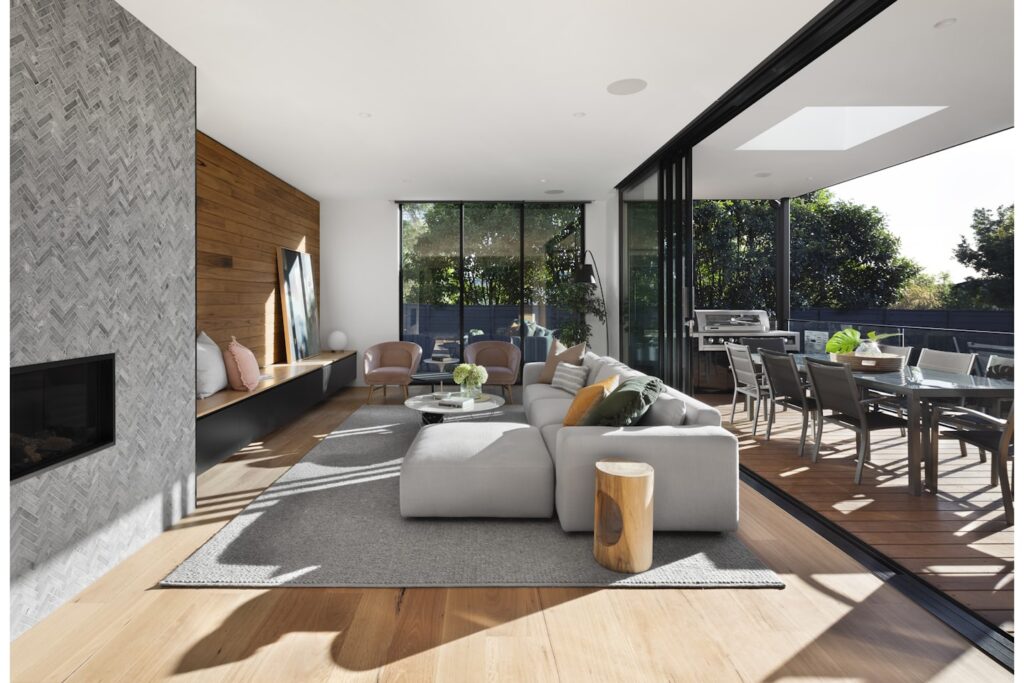Interior Design Tips
Interior Design Tips for Your Custom Home
Designing the interior of your custom home is one of the most exciting parts of the building process. It’s the stage where you can truly personalize your space to reflect your style, preferences, and needs. Whether you’re drawn to a minimalist aesthetic, a cozy cottage vibe, or a more modern approach, the right combination of furniture, paint colors, lighting, and decor can bring your vision to life. In this guide, we’ll walk you through some practical interior design tips to help you make informed decisions and create a space that’s functional and visually appealing.

Furniture: Striking the Balance
Furniture is one of the most important aspects of interior design because it directly impacts both the look and functionality of a room. The pieces you choose need to align with your overall style, but they also need to be comfortable and practical.

Consider Scale and Proportion
When choosing furniture, it’s essential to think about the scale and proportion relative to the size of the room. For larger rooms, you can afford to go for larger furniture, like big sofas, oversized coffee tables, or large bookshelves. In smaller rooms, try to avoid bulky furniture that might overcrowd the space. Instead, opt for pieces that are more compact and multi-functional, like a sofa bed or a nesting table.

Mixing Textures and Materials
Using a variety of textures and materials can add visual interest to your rooms. For example, pair a leather sofa with fabric throw pillows, or mix a wooden dining table with metal chairs. This variety keeps the space from feeling too uniform and creates a layered, more inviting atmosphere.

Quality Over Quantity
It’s better to invest in fewer high-quality, well-made furniture pieces than to fill the room with lower-quality, mass-produced items. This should be non-negotiable. Focus on key pieces such as sofas, dining tables, and beds, which you’ll use the most. Quality pieces not only last longer but often provide more comfort, which is important when you’re spending a lot of time in these spaces.
Paint Colors: Setting the Mood
Paint colors are one of the easiest and most affordable ways to transform a room. The right color palette can enhance the mood and vibe of your space. Whether you’re looking for something calming, energizing, or neutral, the colors you choose will influence how you feel in the room.

Start with a Neutral Base
For many custom homes, starting with neutral base colors for walls, ceilings, and trim is a good idea. Shades of white, beige, gray, or soft taupe create a clean, versatile backdrop that works with most decor styles. Neutral colors also have the advantage of being easy to refresh if you decide to change your decor in the future.

Add Color with Accent Walls
While neutral tones can be perfect for larger areas, consider adding a pop of color with an accent wall. A rich, deep color like navy blue, forest green, or charcoal can add character and interest to a space without overwhelming it. Accent walls work particularly well in spaces like living rooms, bedrooms, or home offices.

Use Lighter Colors to Make Spaces Feel Bigger
If you’re working with smaller spaces, lighter colors tend to open up the room and make it feel more spacious. Light blues, pale greens, and off-whites can create a feeling of airiness, while darker colors can make a room feel more enclosed. For rooms with limited natural light, softer hues can help create a brighter and more welcoming atmosphere.

Test Before Committing
Before settling on a paint color, always test a small sample on the wall. Lighting can greatly affect how a color looks in a space, so it’s essential to see how the shade will look at different times of the day.
Lighting: Setting the Right Ambiance
Lighting can dramatically change the way your custom home feels. The right lighting not only helps with functionality but also contributes to the atmosphere of a room. It’s important to layer your lighting, so you have options for different tasks and moods.

Use Multiple Lighting Layers
Instead of relying on just overhead ceiling lights, use a combination of ambient, task, and accent lighting. Ambient lighting provides overall illumination, while task lighting is more focused, ideal for activities like reading or cooking. Accent lighting highlights specific areas or objects in a room, such as artwork, plants, or architectural features.
- Ambient Lighting: This includes overhead lights, recessed lighting, or pendant lights that provide general illumination.
- Task Lighting: Desk lamps, kitchen under-cabinet lighting, or reading lights serve this purpose.
- Accent Lighting: Spotlights, picture lights, or LED strip lights are good for accent lighting.

Consider Dimmers and Smart Lighting
Incorporating dimmers into your light fixtures is an easy way to control the ambiance of a room. Dimmers allow you to adjust the light intensity based on your needs, whether you’re hosting a dinner party or relaxing with a book. Additionally, smart lighting systems give you the ability to control your lights remotely through your phone or voice commands, making it easy to adjust lighting as needed.

Don’t Forget Natural Light
Maximizing natural light is one of the most effective ways to enhance the atmosphere of your home. Large windows, glass doors, and skylights can bring in more daylight, which not only reduces your energy costs but also creates a more open and inviting space. Be sure to position furniture in a way that allows sunlight to flow through the room without being blocked.
Decor: Personalizing Your Space
Decorative accessories are the final touches that can help bring personality and character to your custom home. The right decor can pull a room together, add color, and reflect your tastes.

Art and Wall Decor
Art is a great way to add personality and style to any room. Whether it’s a painting, photograph, or sculpture, art can serve as a focal point or add a touch of color. Don’t hesitate to mix different styles or frame family photos for a personal touch.

Textiles and Fabrics
Throw pillows, blankets, area rugs, and curtains are simple yet impactful decor items. These textiles can add texture and color to your rooms and help define your home’s style. For example, a patterned rug can bring warmth and interest to a neutral living room, while soft fabrics like linen or velvet can make a bedroom feel more luxurious.

Plants and Greenery
Plants can help soften a space and make it feel more lively and inviting. Whether you prefer low-maintenance succulents or large indoor plants like fiddle leaf figs, greenery brings a natural element into your home. Plants also improve air quality, which is an added benefit.

Functional Decor
Don’t forget that decor can also serve a practical purpose. Decorative trays, baskets, and shelves are not only stylish but can also help with organization and storage. This way, your decor helps keep your home tidy while also looking good.
